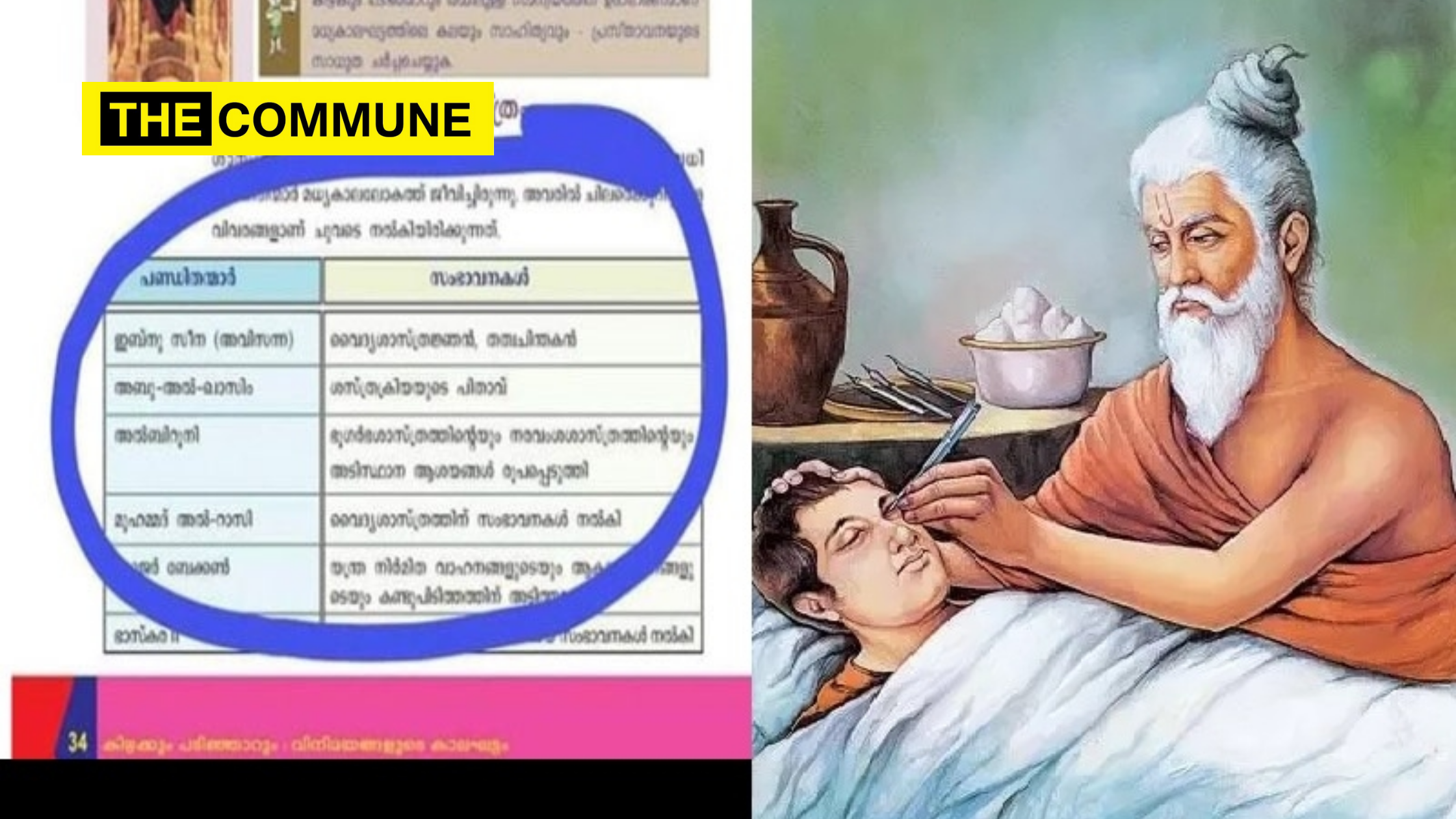
Yet another instance of school textbooks teaching students false history has come to light.
According to the Kerala state board class 9 social science textbook, Abu al-Qasim Al-Zahwari is the ‘father of surgery’. This goes against the widely-known fact that the Indian physician Sushruta (c. 8th century BCE) is known to have performed surgeries and detailed several surgical techniques in his text, the Sushruta-samhita. Al-Zahwari is said to have lived some time in the 10th century CE.
The controversial content is printed on page 34 of the textbook, under the title “Great people and their contributions”. This has generated an immense controversy in Kerala, where people are questioning the state board for blatantly ignoring the fact that Sushruta is widely regarded as the ‘father of surgery’. People allege that textbooks that teach such errors to students are a serious threat to the India’s civilisational fabric, as students who imbibe these errors are deprived of their peoples’ real history.
This news comes after reports of the NCERT admitted that it was unable to back up the highly questionable claims made in its class 12 history textbook. The Parliamentary Standing Committee on Education too had recently convened to discuss a major overhaul of the NCERT syllabus.
The Sushruta Samhita, in its extant form, has 184 chapters contains descriptions of 1,120 illnesses, 700 medicinal plants, 64 preparations from mineral sources and 57 preparations based on animal sources. The text discusses surgical techniques of making incisions, probing, extraction of foreign bodies, alkali and thermal cauterization, tooth extraction, excisions, and trocars for draining abscess, draining hydrocele and ascitic fluid, removal of the prostate gland, urethral stricture dilatation, vesicolithotomy, hernia surgery, caesarian section, management of haemorrhoids, fistulae, laparotomy and management of intestinal obstruction, perforated intestines and accidental perforation of the abdomen with protrusion of omentum and the principles of fracture management, viz., traction, manipulation, apposition and stabilization including some measures of rehabilitation and fitting of prosthetic. It enumerates six types of dislocations, twelve varieties of fractures, and classification of the bones and their reaction to the injuries, and gives a classification of eye diseases including cataract surgery.




